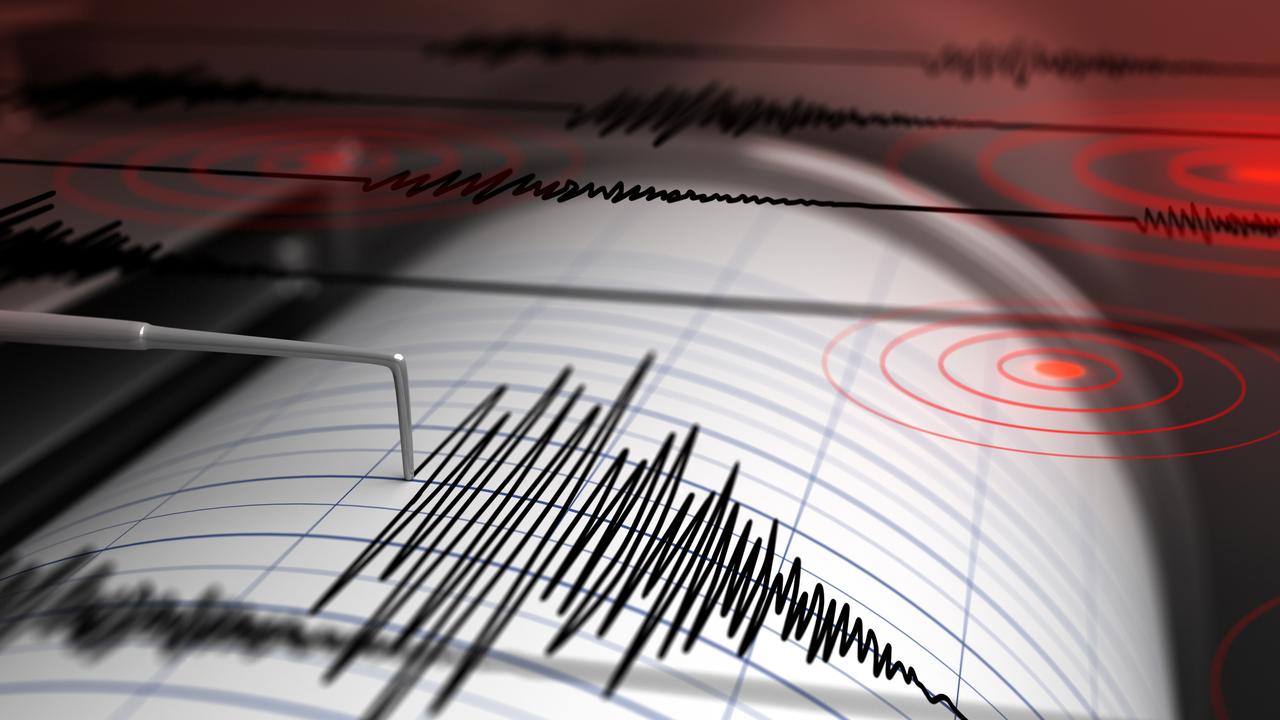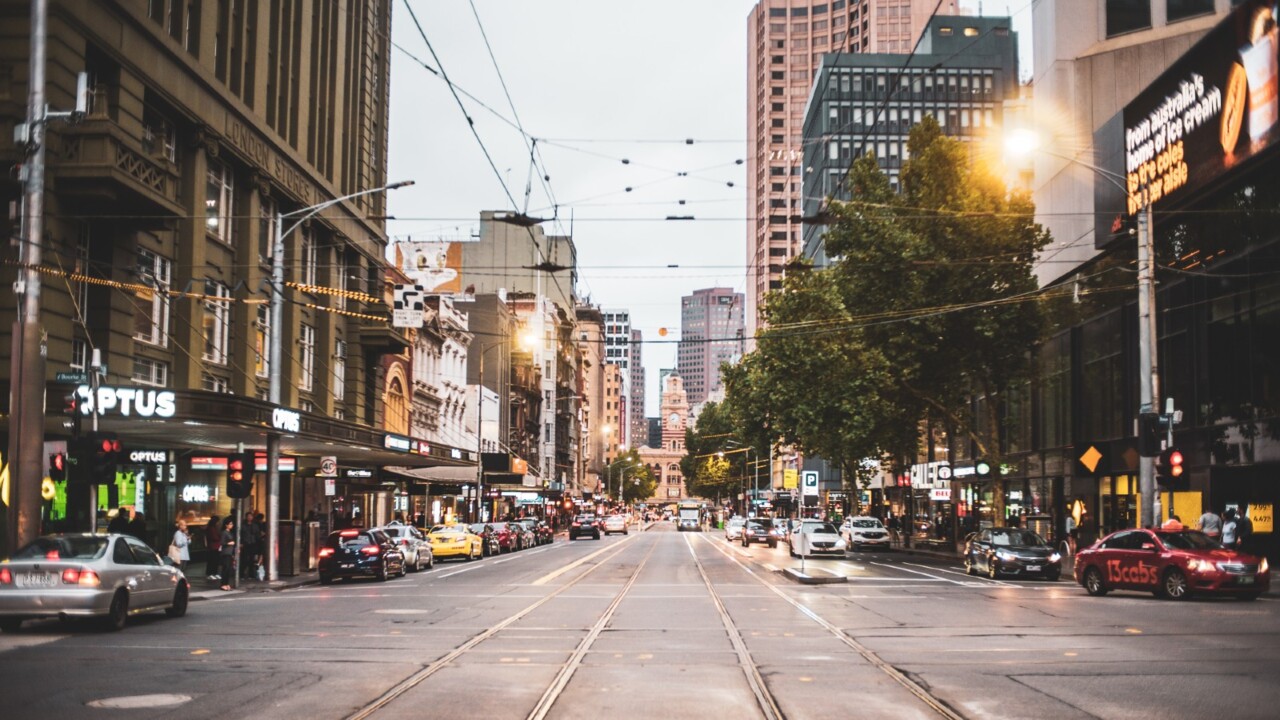Melbourne residents shaken by the city’s largest earthquake in 120 years
Melburnians have been shaken by a 3.8-magnitude earthquake with some thinking the bang was a truck crashing into their home

READING LEVEL: GREEN
Melbourne has been shaken by its largest earthquake in more than 120 years and Victorians have been warned to expect aftershocks* in coming days.
The short but loud 3.8-magnitude* earthquake shook homes late on Sunday night and had some residents fearing a truck had smashed into their homes or that the roof was falling in.
People living in Melbourne, country Victoria and as far away as Hobart in Tasmania reported big bangs as parts of their homes rattled from the force.
The tremor hit at 11.41pm with the epicentre, which is where the quake started, being 2-3km below the town of Sunbury just outside Melbourne.
Seismology* Research Centre head Adam Pascale, who lives in Melbourne, said the earthquake was the largest within 40km of the Victorian capital city in more than a century.
“I was asleep and it got me out of bed,” Mr Pascale told 3AW radio.
“We’ve seen some social posts on social media of people showing cracked plaster which is what you would expect from this sort of earthquake.”
Luckily, no injuries and little damage was reported.

WHAT CAUSED THE QUAKE?
The quake was caused by movement and stress on the tectonic plates* which are big slabs of rock that make up the Earth’s crust. Australia sits in the middle of one of these tectonic plates.
The tectonic plates are always slowly moving, but they get stuck at their edges when they rub up against each other. When the stress on the edge overcomes this friction*, there is an earthquake that releases energy in the form of vibrations called seismic waves. They travel through the Earth’s crust and cause the shaking that we feel.

Mr Pascale explained that the closer an earthquake is to the surface, the more shaking is felt.
People in tall apartment buildings in Melbourne reported their buildings swaying violently while others in suburban homes said it felt “like a bomb going off”.
Many also described the earthquake as extremely loud, with some suspecting their houses were being broken into or that cars had crashed nearby.
“Felt it strongly but the sound was something else,” one woman posted on social media.
“I thought a truck had smashed into our house!”

Geoscience Australia said it had received more than 21,000 reports from people who felt the quake.
Regular smaller earthquakes are considered normal for Victoria. However, in September of 2021, country Victoria was rocked by a record-breaking 5.8-magnitude quake. That one was felt as far away as Sydney and Tasmania. It shook buildings and knocked down walls. It was quickly followed by two aftershocks measuring 4.0 and 3.1 in magnitude.
GLOSSARY
- aftershocks: tremors that follow the earthquake
- magnitude: size
- seismology: the study of what is under the surface of the Earth by measuring vibrations on the Earth’s surface
- friction: force of two objects rubbing together
EXTRA READING
Explainer: What is at the centre of the Earth?
Capturing impossible scale of quake disaster
Australia shifts 7cm north each year causing quakes
QUICK QUIZ
1. How far beneath the earth’s surface was the quake’s epicentre?
2. What are tectonic plates?
3. How far south was the quake felt by residents?
4. What was the official size of this earthquake?
5. What causes buildings to shake more during a quake?
LISTEN TO THIS STORY
CLASSROOM ACTIVITIES
1. Build an earthquake-proof structure
Make groups of 3 in your classroom to design and build an earthquake-proof structure.
Each group will receive the following materials (or can be different as long as each group has the same);
— A newspaper
— Masking tape
— 20 icy pole sticks
— A ball of blu tak
— 5 elastic bands
Each group gets 15 minutes to build a structure that is strong enough to survive a simulated earthquake (a table being shaken quite hard).
Your structure must be a minimum height of 30cm and a maximum height of 60cm.
You must use all the materials given to you in your structure.
As a class, test each structure one by one. Each group has a turn of shaking the table. While shaking the table, at least one leg must be on the ground at all times.
At the end of the experiment, display which structures survived the shaking. Discuss what features made them strong enough to survive the simulated earthquake.
Time: allow 60 minutes to complete this activity
Curriculum Links: English; Science; Design and Technologies; Personal and Social; Critical and Creative Thinking
2. Extension
Why do you think the largest earthquake in Melbourne in 120 years has occurred now?
How do Victorians know if the next shake or rumble is an earthquake or something else?
How do you explain this earthquake activity to children?
Time: allow 15 minutes to complete this activity
Curriculum Links: English; Science; Critical and Creative Thinking
VCOP ACTIVITY
1. Imaginative dialogue
Imagine you were at home during the earthquake and felt the shaking.
Create a conversation between two characters from the article - you may need or want to include yourself as one of the characters. Don’t forget to try to use facts and details from the article to help make your dialogue as realistic as possible.
Go through your writing and highlight any punctuation you have used in green. Make sure you carefully check the punctuation used for the dialogue and ensure you have opened and closed the speech in the correct places.

